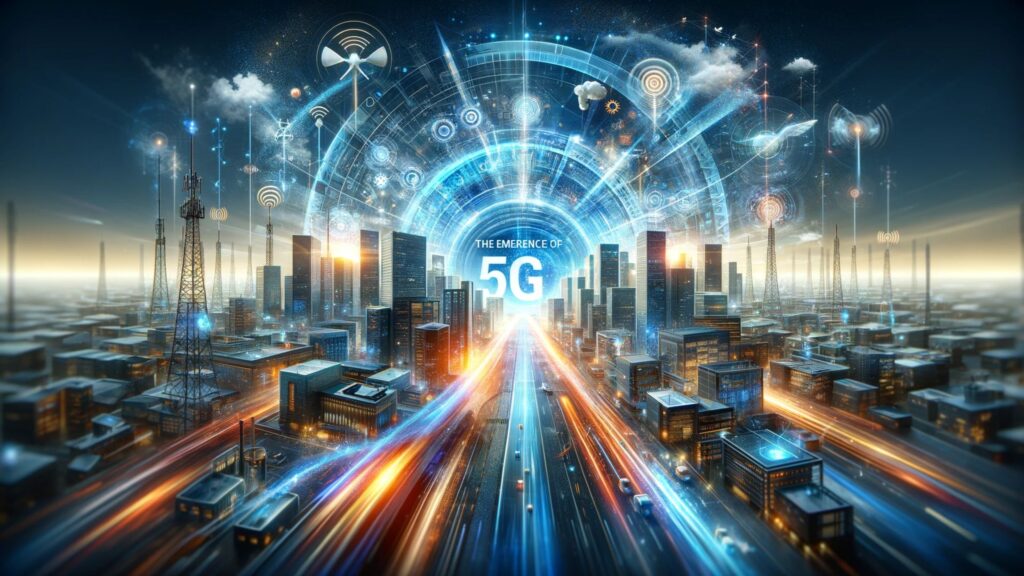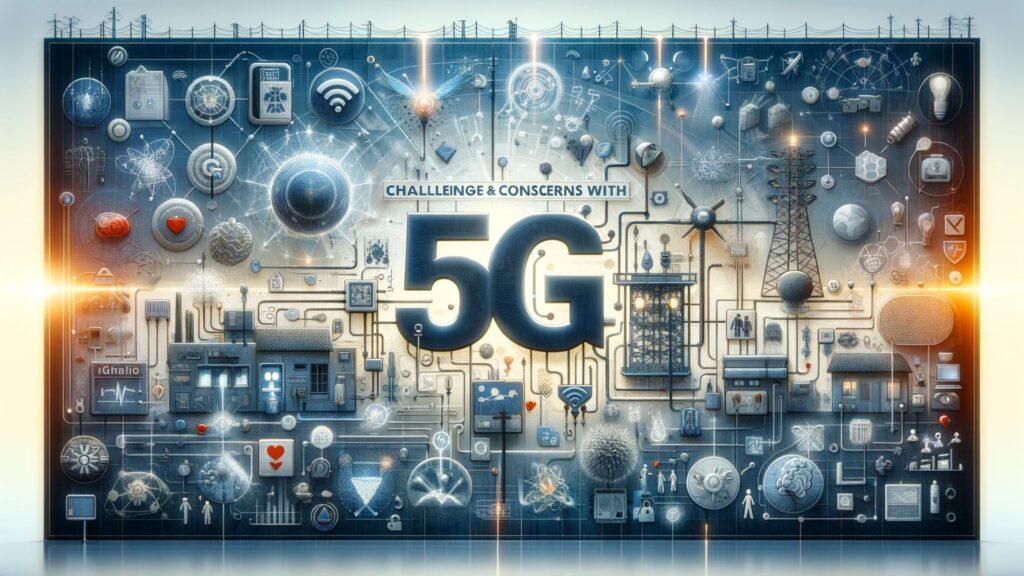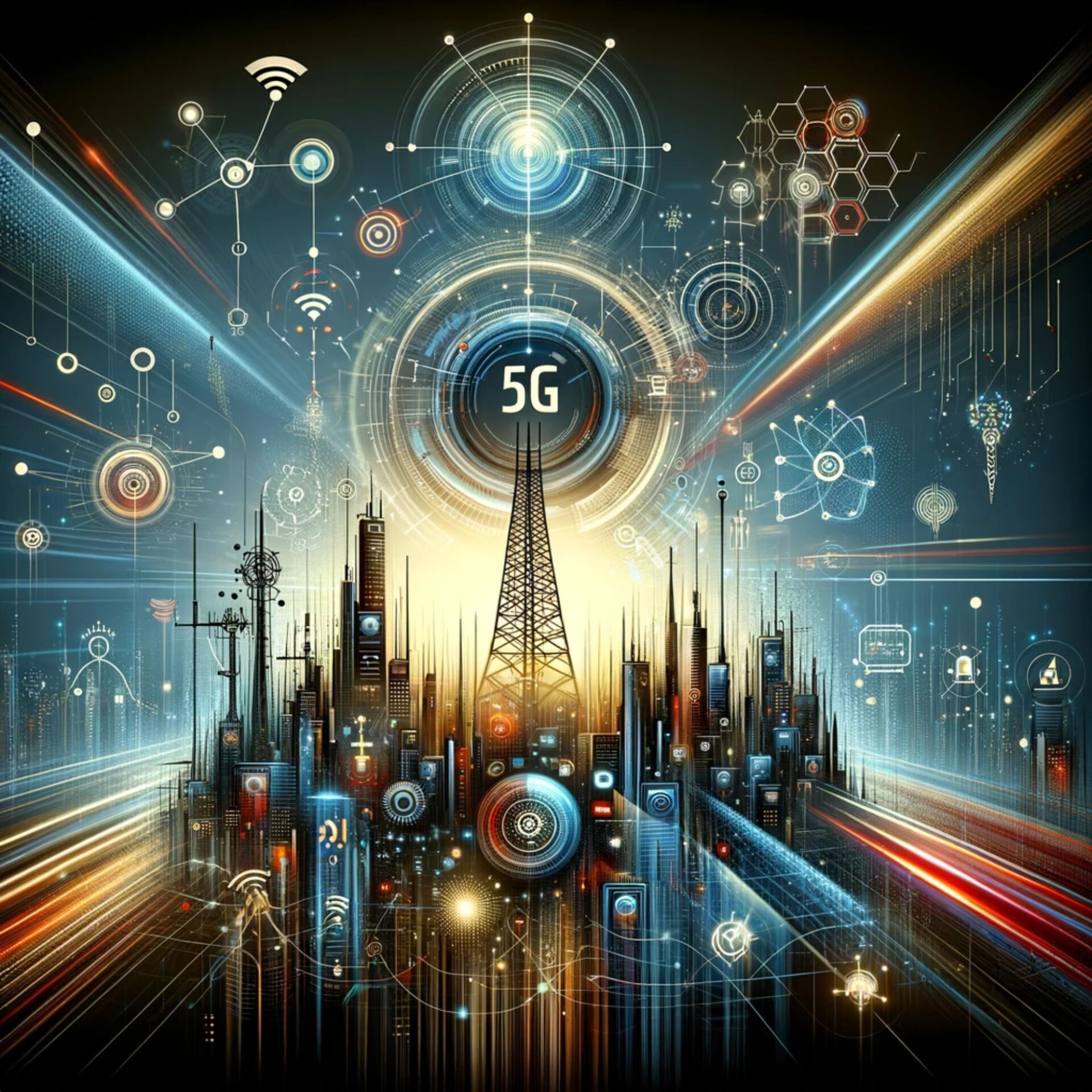In today’s interconnected world, wireless communication is the backbone of our digital lives. It keeps us connected to the internet, allows us to communicate with each other, and enables countless smart devices and applications that enhance our daily experiences. From the early days of mobile telephony to the present, the evolution of wireless communication standards has been a fascinating journey.
In this article, we will embark on a journey through the world of wireless communication standards, with a primary focus on 5G and a glimpse into what the future holds—Beyond 5G. The importance of understanding these standards cannot be overstated, as they shape the way we communicate, work, and live in the modern age.
The Significance of Wireless Communication Standards
Wireless communication standards are the set of rules and protocols that define how information is transmitted wirelessly between devices, be it through cellular networks, Wi-Fi, or other wireless technologies. These standards determine the speed, range, and reliability of our wireless connections.
The significance of these standards lies in their ability to pave the way for innovation and progress. With each new generation of wireless technology, we experience a leap in capabilities, enabling new applications, industries, and opportunities.
Here’s a brief overview of the key wireless communication generations to set the stage for our exploration:
A Brief History of Wireless Communication
1G (First Generation): Introduced in the 1980s, 1G marked the first foray into mobile telephony. It was characterized by analog voice calls and limited coverage.
2G (Second Generation): The 1990s brought 2G, which introduced digital voice calls, text messaging (SMS), and improved security. This era laid the foundation for the mobile revolution.
3G (Third Generation): In the early 2000s, 3G networks enabled mobile internet access, video calling, and faster data transfer speeds. This marked a significant leap in mobile capabilities.
4G (Fourth Generation): Around 2010, 4G networks became widespread, offering high-speed mobile broadband, which transformed the way we use smartphones and gave rise to the app economy.
The 5G Era
Our focus shifts to 5G, the fifth generation of wireless technology that has been making headlines in recent years. 5G represents a monumental leap forward in wireless communication standards, offering several key advancements:
- Speed: 5G networks can provide download speeds of up to 10 gigabits per second (Gbps), significantly faster than 4G.
- Low Latency: With latency as low as one millisecond (ms), 5G is crucial for real-time applications like augmented reality (AR), virtual reality (VR), and autonomous vehicles.
- Capacity: 5G networks can support a massive number of connected devices simultaneously, making them ideal for the Internet of Things (IoT).
- Reliability: The reliability of 5G is paramount for critical applications such as remote surgery and industrial automation.
The introduction of 5G has set the stage for a new era of connectivity, enabling innovative technologies and applications that were previously only seen in science fiction.
A Brief History of Wireless Communication
To truly understand the significance of 5G and the potential of Beyond 5G, it’s essential to take a step back and explore the fascinating journey of wireless communication standards, from their humble beginnings to the present day.
The Birth of Wireless Communication
The origins of wireless communication can be traced back to the late 19th century when visionaries like Guglielmo Marconi and Nikola Tesla were experimenting with radio waves. Marconi’s successful transmission of the first wireless signal across the Atlantic Ocean in 1901 marked the beginning of an era.
The Evolution of Wireless Generations
| Generation | Main Features | Time Period |
|---|---|---|
| 1G | Analog voice calls, limited coverage | 1980s |
| 2G | Digital voice, SMS, improved security | 1990s |
| 3G | Mobile internet, video calling | Early 2000s |
| 4G | High-speed mobile broadband | Around 2010 |
The Pioneering Role of 1G
The first generation of wireless communication, known as 1G, was a breakthrough in its time. It enabled basic voice calls but was largely analog, resulting in limited coverage and voice quality. Despite its limitations, 1G laid the groundwork for future advancements by proving the concept of mobile telephony.
The Digital Revolution: 2G and 3G
The introduction of 2G in the 1990s brought about a digital revolution. This generation brought digital voice calls, SMS messaging, and enhanced security features. It set the stage for 3G, which took mobile communication a step further by introducing mobile internet access and video calling.
4G and the Mobile Broadband Era
Around 2010, the world witnessed the widespread adoption of 4G technology. This fourth generation of wireless standards ushered in the era of high-speed mobile broadband. It significantly improved data transfer rates, enabling seamless streaming, app downloads, and online gaming on smartphones.
The Leap to 5G
As we move forward in time, our focus now firmly lands on 5G, the fifth generation of wireless communication. 5G builds upon the achievements of its predecessors but introduces several groundbreaking features:
- Speed: 5G networks can provide download speeds of up to 10 gigabits per second (Gbps), making it 100 times faster than 4G.
- Low Latency: With latency as low as one millisecond (ms), 5G enables real-time applications like augmented reality (AR), virtual reality (VR), and autonomous vehicles.
- Capacity: 5G networks can support a massive number of connected devices simultaneously, making them ideal for the Internet of Things (IoT).
- Reliability: The reliability of 5G is paramount for critical applications such as remote surgery and industrial automation.
The Emergence of 5G

In the fast-paced world of wireless communication, the transition from 4G to 5G represents a monumental leap in terms of technological capabilities and the potential to transform various aspects of our lives. In this section, we will delve deeper into the emergence of 5G, exploring its fundamentals, key features, and the significant impact it has made on the world of connectivity.
Understanding the Fundamentals of 5G
At its core, 5G is a wireless communication standard that relies on advanced technology to deliver faster, more reliable, and lower-latency connectivity. To appreciate its significance, let’s break down some of the fundamental components and characteristics of 5G:
Key Fundamentals of 5G
Fundamental to 5G’s capabilities are its diverse frequency bands, encompassing the low, mid, and high-frequency spectrums, which in turn facilitate a wide array of use cases. Complementing this, Massive Multiple Input, Multiple Output (MIMO) technology, powered by multiple antennas, enhances signal quality and boosts network capacity. Moreover, the ingenious technique of beamforming optimizes network efficiency and extends coverage to specific devices, while the strategic implementation of small cell stations bolsters localized coverage and network density. Lastly, the innovation of network slicing allows the creation of dedicated, virtualized network segments tailored for specific applications and industries, further exemplifying 5G’s versatile architecture.
Key Features and Capabilities of 5G Networks
5G technology introduces several key features and capabilities that set it apart from its predecessors:
Enhanced Data Speeds:
5G networks offer significantly faster data speeds compared to 4G. With theoretical download speeds of up to 10 Gbps, you can download large files, stream high-definition content, and enjoy lag-free online gaming like never before.
Low Latency:
One of the standout features of 5G is its ultra-low latency. With latency as low as one millisecond (ms), real-time applications like augmented reality (AR), virtual reality (VR), and autonomous vehicles can operate seamlessly. This low latency is critical for tasks that require split-second decision-making, such as remote surgery and industrial automation.
Increased Capacity:
5G networks can handle a significantly higher number of connected devices simultaneously. This makes them ideal for the Internet of Things (IoT) applications, where a multitude of sensors, devices, and machines require constant connectivity and data exchange.
Improved Reliability:
5G networks are designed to be highly reliable, ensuring consistent connectivity even in crowded urban areas or during network congestion. This reliability is crucial for mission-critical applications and emergency services.
Applications and Use Cases of 5G
The deployment of 5G technology has opened the door to a wide range of applications across various industries:
| Industry | 5G Applications |
|---|---|
| Healthcare | Remote surgery, telemedicine, and patient monitoring. |
| Automotive | Autonomous driving, vehicle-to-vehicle (V2V) communication. |
| Manufacturing | Industrial automation, smart factories. |
| Entertainment | Ultra-HD streaming, immersive VR experiences. |
| Agriculture | Precision agriculture, remote monitoring. |
| Smart Cities | Traffic management, public safety, and energy efficiency. |
Benefits and Applications of 5G
In our exploration of 5G, it becomes evident that this fifth-generation wireless standard is more than just an incremental improvement; it’s a game-changer with far-reaching implications. This section will delve into the diverse benefits and applications of 5G, demonstrating how it is transforming various industries and enhancing our daily lives.
Transformative Benefits of 5G
5G technology offers a plethora of benefits that are poised to revolutionize the way we live, work, and interact with technology. Let’s take a closer look at these transformative advantages:
Key Benefits of 5G
- Faster Speeds: 5G networks provide blazing-fast download and upload speeds, enabling seamless streaming, rapid file transfers, and lag-free online gaming.
- Lower Latency: With near-instantaneous response times, 5G makes real-time applications like augmented reality (AR) and virtual reality (VR) more immersive and responsive.
- Enhanced Capacity: 5G can handle a massive number of connected devices, making it ideal for the Internet of Things (IoT) and smart cities.
- Improved Reliability: Highly reliable 5G networks ensure consistent connectivity, even in crowded urban areas or during emergencies.
- Energy Efficiency: 5G infrastructure is designed for energy efficiency, reducing the environmental footprint of wireless networks.
Impact on Various Industries
The transformative power of 5G extends across a wide array of industries, opening up new possibilities and driving innovation:
Healthcare:
5G is revolutionizing healthcare by enabling remote surgery, telemedicine consultations, and real-time patient monitoring. Surgeons can perform delicate procedures from a distance, improving access to medical expertise.
Automotive:
The automotive industry benefits from 5G through advancements in autonomous driving. Vehicles equipped with 5G connectivity can communicate with each other (vehicle-to-vehicle or V2V) and with smart infrastructure (vehicle-to-infrastructure or V2I) to enhance safety and efficiency on the road.
Manufacturing:
In manufacturing, 5G facilitates industrial automation and the development of smart factories. It enables machines to communicate and coordinate tasks seamlessly, improving production efficiency and reducing downtime.
Entertainment:
The entertainment industry is enhanced by 5G’s ultra-high-speed connectivity. Users can enjoy immersive virtual reality (VR) experiences, stream 4K and 8K content seamlessly, and participate in multiplayer online gaming with minimal lag.
Agriculture:
Agriculture benefits from 5G through precision agriculture techniques. Farmers can use IoT sensors and drones to monitor crops and livestock, optimizing resource usage and increasing yields.
Smart Cities:
5G plays a crucial role in the development of smart cities. It enables efficient traffic management, public safety applications, and energy-saving measures, contributing to more sustainable urban environments.
These are just a few examples of how 5G is transforming industries and enhancing the quality of life. The impact of 5G is profound and continues to evolve as its deployment becomes more widespread.
Challenges and Concerns with 5G

While 5G technology holds immense promise and potential, its rapid deployment and widespread adoption have also brought forth a set of challenges and concerns. In this section, we will delve into some of the key issues associated with 5G and explore strategies to address them.
Security Concerns
As 5G networks become more integrated into critical infrastructure and daily life, security is a paramount concern. Some of the security-related challenges include:
Key Security Concerns with 5G
- Cyberattacks: The increased attack surface of 5G networks presents opportunities for cybercriminals to exploit vulnerabilities.
- Data Privacy: The vast amount of data transmitted over 5G networks raises concerns about data privacy and potential breaches.
- Supply Chain Risks: The global nature of 5G infrastructure components introduces risks related to supply chain security.
- Network Vulnerabilities: As 5G networks rely on complex software-defined infrastructure, they may be susceptible to software vulnerabilities.
Mitigation strategies for security concerns include robust encryption, regular security audits, and collaboration between industry stakeholders and cybersecurity experts to stay ahead of emerging threats.
Health Concerns
There has been ongoing debate and research regarding potential health effects associated with exposure to electromagnetic fields (EMF) from wireless technologies, including 5G. Key points to consider include:
Key Health Concerns with 5G
- Electromagnetic Fields: Some individuals express concerns about potential health effects from long-term exposure to EMF emitted by 5G infrastructure.
- Safety Standards: Ensuring that 5G networks comply with established safety standards is essential to address these concerns.
To address health concerns, regulatory bodies such as the International Commission on Non-Ionizing Radiation Protection (ICNIRP) have set guidelines for safe exposure levels. Continued research and monitoring are essential to assess and mitigate potential risks.
Infrastructure and Deployment Challenges
The rollout of 5G networks faces several practical challenges, including:
Key Deployment Challenges with 5G
- Infrastructure Investment: Building the necessary infrastructure for 5G can be costly and time-consuming.
- Spectrum Allocation: Ensuring sufficient and harmonized spectrum allocation is critical for the performance of 5G networks.
- Regulatory Hurdles: Regulatory approvals and local ordinances can slow down deployment efforts.
- Urban Density: Deploying 5G in densely populated urban areas requires careful planning and infrastructure placement.
Efforts to address these challenges include public-private partnerships, streamlined regulatory processes, and investment in research and development to optimize infrastructure deployment.
Environmental Impact
The energy consumption associated with 5G infrastructure is a consideration, as increased data processing and transmission can have environmental implications. Strategies for mitigating the environmental impact of 5G include energy-efficient network design and renewable energy usage.
Addressing Concerns for a Sustainable 5G Future
To harness the full potential of 5G while addressing its challenges and concerns, a multidisciplinary approach involving governments, industry players, researchers, and the public is essential. This collaborative effort can pave the way for a sustainable and secure 5G future that benefits society, industry, and the environment.
Beyond 5G: What Lies Ahead
As technology continues to evolve at an unprecedented pace, the world of wireless communication standards is already looking beyond 5G to the next horizon. In this section, we will explore the concept of “Beyond 5G” or 6G and delve into the potential advancements and use cases that lie ahead.
The Concept of Beyond 5G (6G)
While 5G is still in the process of global deployment, researchers, industry experts, and innovators are already laying the groundwork for the sixth generation of wireless communication technology, often referred to as “6G.” So, what is 6G, and what sets it apart from its predecessor?
Potential Advancements in Beyond 5G
Beyond 5G, we can anticipate several advancements that will shape the future of wireless communication:
Augmented Reality (AR) and Virtual Reality (VR):
6G is expected to enable even more immersive AR and VR experiences by providing the high-speed, low-latency connectivity needed for seamless virtual environments.
Holographic Communications:
Holographic telepresence, where users can interact with lifelike holographic representations of remote individuals, is a potential application of 6G.
Advanced Healthcare:
Beyond 5G may revolutionize healthcare with remote surgeries performed with robotic precision, powered by real-time haptic feedback and augmented reality guidance.
Sustainable Connectivity:
6G aims to be more energy-efficient and environmentally friendly, addressing concerns about the environmental impact of wireless infrastructure.
Preparing for the Future of Connectivity
As we look to the future of wireless communication standards, collaboration among governments, regulatory bodies, industry leaders, and researchers becomes critical. The development and deployment of Beyond 5G (6G) will require international cooperation, the establishment of global standards, and the anticipation of evolving technological needs.
Implications for Society and Industry

As we journey through the world of wireless communication standards, it is crucial to understand the profound implications that these advancements hold for both society and industry. In this section, we will explore how the evolution of wireless standards, particularly 5G and Beyond 5G (6G), is reshaping our world.
Transforming Society
Connectivity Everywhere:
5G and future wireless standards promise to bring high-speed, low-latency connectivity to even the most remote and underserved areas. This democratization of connectivity can bridge the digital divide, allowing individuals around the world to access educational resources, healthcare services, and economic opportunities.
Revolutionizing Healthcare:
The healthcare industry is undergoing a significant transformation with the introduction of 5G and Beyond 5G technologies. Telemedicine, remote monitoring, and AI-powered diagnostics are becoming more accessible, making healthcare more efficient and accessible.
Smart Cities and Sustainability:
The advent of 5G and 6G is propelling the development of smart cities. These cities leverage data and connectivity to optimize resource usage, improve traffic management, enhance public safety, and reduce energy consumption. The result is more sustainable, efficient urban environments.
Impact on Industry
Industry 4.0:
5G and Beyond 5G are pivotal in the Industry 4.0 revolution. Manufacturing processes are becoming more automated and efficient, thanks to the low latency and high capacity of these networks. Smart factories, predictive maintenance, and seamless supply chain management are becoming the norm.
Autonomous Transportation:
The transportation industry is on the brink of a transformation. Autonomous vehicles, drones, and intelligent traffic management systems are poised to revolutionize how we move people and goods. These advancements rely heavily on the connectivity and low latency provided by 5G and Beyond 5G networks.
Entertainment and Media:
The media and entertainment industry is experiencing a renaissance with 5G. Ultra-high-definition content, augmented reality experiences, and interactive gaming are becoming more immersive and accessible to a global audience.
Preparing for a Connected Future
As we navigate this transformative era of wireless communication standards, preparedness is key. Governments, organizations, and individuals must adapt to this connected future by:
- Investing in Infrastructure: Governments and organizations should invest in building and upgrading the necessary infrastructure to support advanced wireless networks.
- Education and Training: Preparing the workforce for the digital economy by providing education and training in emerging technologies.
- Ethical Frameworks: Developing ethical frameworks and regulations that balance technological advancements with societal values and privacy rights.
Conclusion
In the ever-evolving landscape of wireless communication standards, the journey from 1G to 5G has been marked by remarkable technological advancements that have revolutionized the way we connect, communicate, and interact with the digital world. With 5G already making waves across industries and societies, the horizon of Beyond 5G (6G) promises even more transformative changes.
As we stand at the crossroads of this technological revolution, it is imperative that we embrace the opportunities these wireless standards offer while remaining vigilant about addressing the associated challenges. Ethical considerations, privacy concerns, and the need for global cooperation in shaping the future of wireless technology must all be carefully navigated. With concerted efforts and a commitment to harnessing these advancements for the betterment of society, we are on the cusp of a connected future that holds boundless possibilities for innovation and progress.




